Honda Fit Vs Honda HR-V Comparison

Back in the 90s, kids were sullenly rocking out to grunge music and car makers were busy making alternate-universe versions of cars they already had on sale. Witness the Explorer/Navajo duo, or the Lumina/Cutlass Supreme/Grand Prix triplets. Common parts abounded, even if the target audiences were as disparate as chalk and cheese.
These days, manufacturers are pulling similar tricks. This time, however, instead of changing the grille and trim they’re adding a few inches of height and the veneer of extra utility. The brace of Hondas in this spec comparison both sprout from similar places on the Big H family tree.
How much difference is there between the Honda Fit and the Honda HR-V? Which one is right for you? How many questions can I ask before my editor cuts me off? Read on to find out.
Powertrains
Fit: A single engine choice is on the menu for Fit shoppers, though it comes in two different power ratings depending on which transmission is selected. The 1.5-liter inline-four makes 130 horsepower when mated to a six-speed automatic but loses two of those ponies when a continuously variable transmission is installed. Torque, rated at 114 pound-feet with the stickshift, inexplicably sheds a single foot-pound once a CVT shows up to play.
Get a Quote on a New Honda HR-V or CR-VHR-V: This model is equipped with a 1.8-liter inline-four regardless which of the five trims is selected. Since a CVT is the sole transmission choice, there are no variances in output, with all HR-Vs making 141 hp at a lofty 6500 RPM. Torque, all 127 lb-ft of it, comes online at 4300 RPM.
SEE ALSO: Mazda CX-5 Review
Bottom Line: Both these cars make their peak power just 200 RPM shy of their redline, meaning the vast majority of their owners will likely not explore the outer edges of either vehicle’s maximum power. The extra 11 horses in the HR-V hardly makes up for an extra 340 pounds compared to its little cousin (base models compared), meaning the Fit takes the win here.
Fuel Economy
Fit: Stellar mileage is often a key factor in the decision to buy a small car like the Fit. Equipped with the six-speed manual, it returns 29 mpg in town and 36 mpg on the highway for a combined rating of 31 mpg. Opting for the CVT in the base LX model improves these fortunes to 33 mpg in the city and an all-star 40 mpg during highway driving. Combined, bank on about 36 mpg. Sport and EX trims (and the fancy EX-L) shed a couple of mpg in each cycle thanks to a heavier curb weight brought about by a higher level of standard equipment.
HR-V: Just because one wants to ride a few inches higher off the ground doesn’t mean one has to suffer horrendous fuel economy. In fact, two-wheel drive HR-V units give up just a single mpg compared to a stickshift base Fit. Adding all-wheel drive puts weight and complexity underneath the HR-V, reducing mileage numbers to 27 mpg in town, 31 on the highway, and 29 combined.
Bottom Line: Both cars run fine on regular unleaded, so that calculation is a wash. The HR-V can hold a couple of extra gallons, though, meaning its owners will enjoy a shade more driving range. From a purely numbers perspective, it’s hard to beat the base Fit and its ability to crack the magical 40 mpg barrier.
Cabin Space
Fit: With some of the world’s best engineers and designers lending their talent to development of the Fit, this diminutive subcompact car surprises nearly everyone who clambers aboard. Headroom measures 39.5 inches in the front, the same or better than most crossovers on today’s market. Front legroom is also vast, an expansive 41.4 inches which only falls to 39.3 inches for back-seat drivers. Total passenger volume? 95.7 cubic feet for five passengers.
HR-V: Thanks to some shared parts, the HR-V offers an identical amount of headroom to the smaller Fit. Front legroom is down by only 0.2 inches, while legroom for your horses in the back is identical to the Fit. Passenger volume is a hair over 100 cubes but on 96.1 cubic feet when equipped with the intrusive sunroof.
Bottom Line: Remember when Chrysler introduced the concept of “cab-forward” design about thirty years ago? Well, the Fit can be considered “cab-everywhere.” Its amount of interior space rivals that of bigger-bro HR-V, no small feat when today’s cars must incorporate a raft of safety nannies and ever more complicated infotainment systems, both of which consume interior space thanks to their modern complexities.
Cargo Capacity
Fit: This measure is where Fit’s clever packaging comes into its own. With the back seat ready to accept three passengers, the subcompact car can hold 16.6 cubic feet of stuff. Fold those seats down, however, and an incredible 52.7 cubes is yours for the taking. It must be noted that this amount of space rivals that found in much larger crossover vehicles.
HR-V: Cargo volume in the HR-V with the second-row seat up is a healthy 24.2 cubic feet (deduct 1.1 cubes if you opt for all-wheel drive thanks to the extra drivetrain gear). Fold that seat away and 58.8 cubic feet reveals itself. Be sure to subtract 1.2 cubic feet from that number if your HR-V is equipped with all-wheel drive.
Bottom Line: While the HR-V is certainly more commodious than the Fit when there are passengers in the rear seat, your author never tires of the surprised looks on faces of people when they realize just how much kit one can pack into a Fit.
Technology
Fit: Perhaps surprising for such a small car, all trims are available with the brand’s excellent Honda Sensing suite of safety nannies. Bundling the likes of forward collision and lane departure warnings plus lane keeping and adaptive cruise control, this suite of safety nannies is a great group of kit on a car that’s likely to be piloted by new drivers. Honda Sensing is optional on CVT-equipped LX and Sport models, standard on higher trims.
HR-V: Buyers will find the Honda Sensing gear on mid-level EX and up trims. Infotainment is handled by a 7-inch touchscreen, except for LX models which get a 5-inch LCD, which includes CarPlay and Android Auto (absent on base cars). USB ports are found in the fore but are of the slow charge variety. For reasons unknown to man, satellite radio doesn’t appear until the EX.
Bottom Line: Save for the Honda Sensing tech, which is a boon to new or nervous drivers, neither of these cars checks many boxes in terms of snazzy tech. Charging ports are slow, touchscreens are small, and essential kit like CarPlay and satellite radio are not available on all trims.
Style
Fit: The little scamp may bear a flattened front fascia making it look as if it was punched in the nose but at least it no longer looks like a science experiment. Front headlamps sweep back to the front doors, portals which share front DLO space with an enormous triangle of glass resting just ahead of each front side window. This detail is one of the reasons the Fit provides its cabin with such a light and airy feel.
HR-V: Borrowing heavily from other members of the Honda crossover family, the HR-V deploys an enormous chrome schnoz in an effort to incorporate the brand’s corporate visage. It works, kinda, but in certain lighting and angles the HR-V looks like a kid who’s raided his father’s closet and is now wearing a business suit ten sizes too large. Rear door handles tucked into the c-pillar is a shrewd touch that gives HR-V the illusion of being a two-door … for an instant, at least.
Bottom Line: Style is always a subjective matter but this author thinks the Fit, especially in one of its extroverted paint colors, is the better-looking machine in this comparo. Like a spunky puppy who excitedly runs around the dog park, the Fit perpetually looks like a bundle of ready-to-release energy.
Pricing
Fit: The cheapest Honda Fit is, predictably, a base LX equipped with the six-speed manual transmission. It has an MSRP of $16,190. Swapping the stick for a CVT is an $800 proposition. Volume-leader Sport and EX trims start at $17,500 and $18,160 respectively. Those without restraint may find themselves in the driver’s seat of a Fit EX-L with navigation, a machine costing $21,520.
HR-V: A front-wheel drive version of the HR-V in base LX trim picks up almost exactly where the Fit leaves off, stickering at $20,620. Adding power to all four corners tacks on $1,400. Snazzy Sport and popular EX models will leave their buyers holding a note for $22,320 and $23,820 respectively. Again, all-wheel drive is a $1,400 proposition. The HR-V has an extra trim atop its totem pole compared to the Fit. Called the Touring, it costs $28,640 and is only available in all-wheel drive.
Bottom Line: Looking at absolutes, the Fit is this round’s clear winner, undercutting the HR-V in all but its most expensive form. The HR-V is a decent buy until one starts venturing into EX-L and Touring territory, where its value proposition becomes decidedly murky.
Honda Fit vs HR-V: The Verdict
Unless you’re all agog for all-wheel drive, the Fit is likely a better—erm—fit for people shopping in this size class. The taller HR-V doesn’t offer much extra in the way of legroom or seats-down cargo space compared to the Fit, yet the latter gets much better fuel economy and has a smaller price tag.

Living in rural Canada, Matthew has immersed himself in car culture for over 30 years and relishes the thought of a good road trip. A certified gearhead, he enjoys sharing his excitement about cars and is very pleased to contribute at AutoGuide. Matthew is a member of Automotive Journalists Association of Canada (AJAC).
More by Matthew Guy




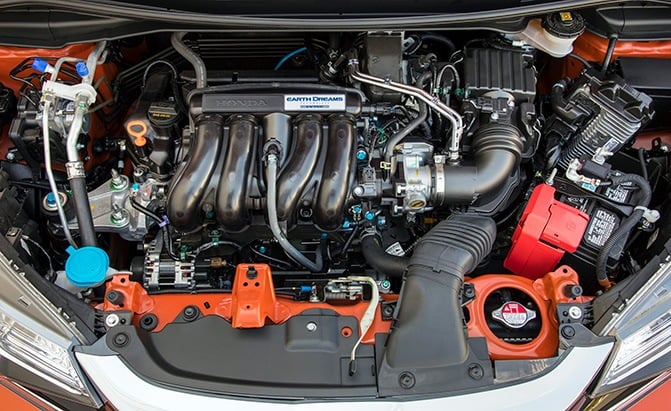



























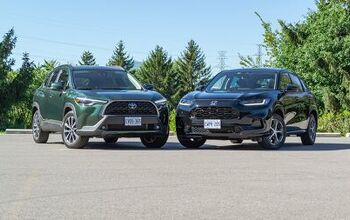








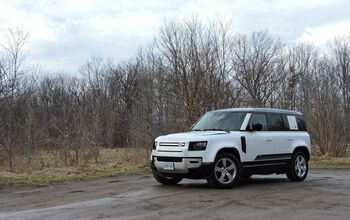

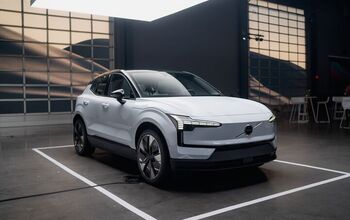

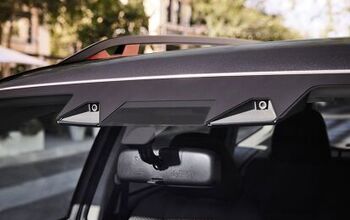
Comments
Join the conversation
Discontinuing the Fit (and Toyota Yaris) in America shows how the country is irrational.
HRVs are everywhere now. I love my Fit but it feels like I am driving a Little Tykes with a stick shift at times. Getting in requires a trust fall. To get out, pretend you are a ball turret gunner bailing out of a WW2 bomber. Momentum is against this class of car in the US.